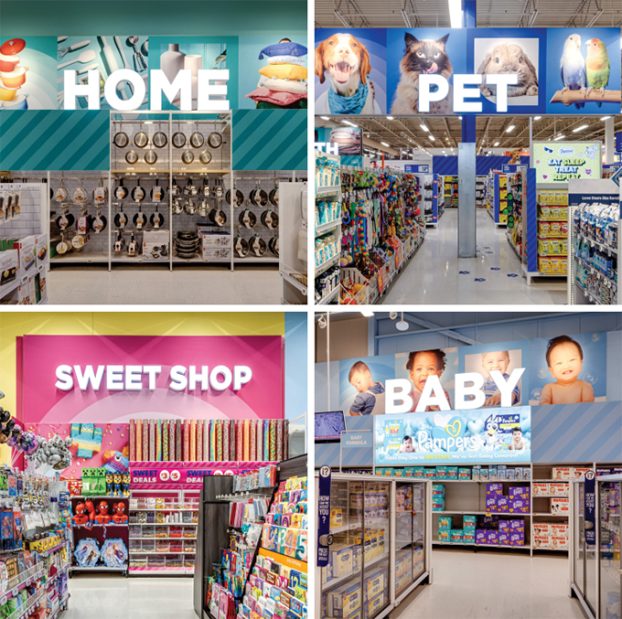Tim Hortons has long been a Canadian stalwart, first opening its doors in 1964. But over the last 10 years it’s really cemented and expanded its place in the Canadian zeitgeist beyond its donut origins, becoming ensconced in more urban Canuck culture as a beloved go-to snack stop, particularly a daily morning pilgrimage.
Recent years have seen mounting competition in the QSR category, including aggro offensives like free coffee campaigns from the competition, doppelganger “Roll Up The Rim” promotions and flash-in-the pan competitive imports (remember all the fuss about Krispy Kreme?). But with a 40% share of Canadian QSR traffic, the top market share of the breakfast and snacking day parts and second highest for lunch, and being the largest publicly traded restaurant chain in Canada (fourth largest in North America) after going public in 2009, Tim Hortons is arguably Canada’s QSR king.
Throughout the decade it has achieved solid status as a national icon: Canadians culturally identify with the double-double as readily as other nationwide institutions, like hockey. In fact, thanks to savvy advertising efforts on the part of Timmy’s and its AOR of 20 years JWT, for many parents a hot cup of Tim Hortons coffee goes hand-in-hand with watching their kid’s early morning hockey practice.
The advertising is one of three factors that Bill Moir, chief brand and marketing officer, Tim Hortons, says drives the fervent loyalty Canadians have for the brand. Aside from its annual “Roll up the Rim to Win” promotion, a tradition beloved by many a Canuck, the long-standing “True Stories” has gone a long way to make Tim’s an integral part of the Canadian condition since launching in 1998. The success can be ascribed, in no small part, to the fact that the inspiration behind many of the stories are tales submitted by customers, a phenomenon that increased when the brand launched its “Every Cup Tells Story” website in 2008.
A “True Story” that recently aired, leveraging the Winter Olympics in Vancouver, portrayed an African man welcoming his family home to Canada for the first time with winter jackets and Tim Hortons coffee. It was a play on the many tales the chain has received from newly arrived immigrants who found that while discovering what it means to be Canadian, their search inevitably led them to Tim Hortons. 
“[‘True Stories’] has been crucial to us and we’ve been very consistent every year with a new spot,” says Moir. “It reflects the emotional connection that our customers have with the brand.”
Another emotional driver, says Moir, is the work that Tim Hortons does on a local grassroots basis; its involvement in the Canadian communities where it has stores. The QSR chain has 300 store groups, based largely on geography, each with a separate regional budget for local initiatives. The brand has flagship programs that run in most markets, albeit with a local focus, like Timbits Sports, which has been around for 20 years, and the Smile Cookie campaign – store owners sell a Smile Cookie for a dollar with the proceeds going to a local charity. Taking place in September, it raised $3 million this year.
There is also, of course, Camp Day. Along with Timbits Sports, it’s run under the purview of the Tim Hortons Children’s Foundation established by chain co-founder Ron Joyce in 1974. Every year it raises close to $10 million and sends children from every market where Tim Hortons has a location – the number of kids depending on the number of stores – to camps. The rest of the local budgets are delegated to more community-specific events like waterfront festivals and fundraisers.
“The structure of the regional marketing allows us to do local, grassroots programs in a very strategic way,” says Moir. “There are some programs that get done in most markets and then the other ones are really what are important to the community.”
Tim Hortons’ community outreach isn’t just domestic. In 2005 it initiated the Tim Hortons Coffee Partnership in markets where it buys its coffee, like Guatemala, Brazil and Colombia, aimed at small farmers. The brand helps famers produce better coffee with higher yields, shows them how to be sensitive to the environment and spearheads efforts to help kids in those communities. As of 2010, the brand is working with 2,500 farmers.
The emotional connection is also deepened by the relationship between the customer and their local Tim Hortons employees, which Moir says is often founded on a high level of familiarity. He cites a conversation he had with a truck driver, who said all he has to do when he gets to his local Tim’s drive-thru is rev his engine so the staff knows who he is and what he wants to order.
“I think when you treat your guests the way they want to be treated then they’ll keep coming back to you and you’ll get to know them and help to establish that connection,” says Moir.
He adds that beating expectations is also a goal, and was the impetus behind a revamp over the past year to focus on increasing order accuracy, speed and the receptive attitude of staff.
Tim’s holds its products to similarly high standards. It put a 20-minute freshness guarantee on its coffee, decreeing that it can’t be served once its shelf life has exceeded that time limit. The same holds true for its baked goods. Product innovation focuses on maintaining three brand fundamentals – freshness (both in food and in keeping the brand relevant), price value and convenience – across three categories: hot and cold beverages, snacks and prepared foods.
In 2003, the company introduced its Always Fresh baking system. Whereas before its products, like donuts and Timbits, were scratch baked – made by a supplier, flash-frozen and then shipped to stores – now the company bakes its wares in-store to ensure quality and consistency of look, taste and shape. The system also reduces waste as stores can produce to demand.
Breakfast became a focus in 2006 with the introduction of its breakfast sandwich and has grown from a biscuit to English muffins, breakfast wraps, hash browns and, new this year, oatmeal. “Once we successfully launched the first [breakfast] product it allowed us credibility,” says Moir.
Though Moir admits that, relatively speaking, Tim Hortons came a little late to the breakfast game, its offering has helped bolster the brand’s status as the go-to destination for mornings. According to market research company NDP Group, in 2009 Tim Hortons commanded the highest market share of breakfast out of all QSR chains in Canada with 67% of the traffic.
A continual focus on lunch and the “evening snack day part,” along with its breakfast innovations, have helped Tim’s go far beyond its initial coffee and donuts offering to become more competitive throughout the day. The chain’s done a lot of work on its soups, offering up more featured flavours over the years and has developed its sandwich bread, creating “Bigger, Softer, Better Buns,” basically innovating in the same way as its bakery items: constantly tinkering with price points, improving and introducing new products.
In 2009, it launched a co-branding initiative, which brought Scottsdale, Arizona-based Cold Stone Creamery to Canada. And, when it comes to keeping customers informed about these new products, it doesn’t slouch. Tim’s has a new promotional program every four weeks that communicates what’s new.
Where Tim’s has really been delivering on the convenience aspect has been through its real estate build-out, with a particular focus over the last decade of hitting up more urban areas, like downtown Toronto, and non-traditional sites like hospitals, universities, airports and train stations (it recently opened up a location in Toronto’s Union Station). They even opened one in Kandahar, Afghanistan to serve the men and women of the Canadian Forces.
“Over the last 10 years what we’ve been able to do is really take the brand to where people are; it’s found business, because we wouldn’t [normally] get a sale because of where they are,” says Moir. “It’s been a very important aspect of the brand.”
Over the decade Tim’s has experienced a Canadian average of 6.6% same-store sales growth per year. Two thousand stores in Canada in 2000 have grown to 3,000 today. The U.S. has also been a part of the expansion plans over the decade, particularly in designated market areas (as they’re called south of the border) located around the Great Lakes, which contain roughly 90 million people. Once the brand feels it has achieved enough penetration in one DMA, it moves on to contiguous markets. Notably, it launched its first New York City location in 2009.
Currently, Tim’s has over 500 stores in the U.S. and over 10 years has seen an average same-store sales growth of 6.9%, though it made a strategic decision in November to close 36 locations mostly located in Providence, R.I. and Hartford, Conn. They were underperforming, causing the company to fall short of the expected 53 cents per share earnings in the third quarter of this year, instead earning 42 cents per share – $73.8 million – which was still up over 20% from last year.
No doubt, Tim Hortons is Canada’s QSR mascot, the torch-bearer. Its success, says Moir, comes from a combination of things: its iconic status, its business success year over year, but it mostly comes by being humble.
“I think the success of the brand has always been that we believe that we need to get better every day,” he says. “There’s humility in the system that keeps everybody pretty grounded.”
There’s nothing more Canadian than that.
Jump to:























